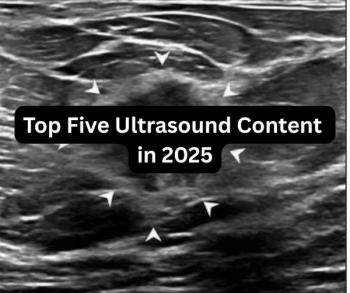Tumor sphericity on preoperative magnetic resonance imaging (MRI) may play a significant role in the prognosis and management of patients with IDH-wildtype glioblastoma (GBM).
In a retrospective study, recently published in Insights into Imaging, researchers reviewed preoperative MRI data from 842 patients with IDH-wildtype GBM in order to assess the prognostic impact of tumor sphericity on overall survival as well as benefit from gross tumor resection.
In a multivariable analysis, the researchers found that low tumor sphericity was associated with a 38 percent higher risk of death.
“Harsh (tumor) microenvironment conditions may cause (tumors) to grow with morphological invasiveness. These conditions mainly include hypoxia and a heterogeneous extracellular matrix, which is a key feature of the infiltrative phenotypes of GBM. These theories may explain the prognostic value of sphericity,” wrote lead study author Manoj Tanwar, M.D., who is the chief of MRI and an assistant professor in the neuroradiology section of the Department of Radiology at the University of Alabama at Birmingham, and colleagues.
However, while treatment via gross total resection (GTR) offered no significant impact on overall survival for patients with high tumor sphericity, the researchers found that patients with low tumor sphericity who were treated with GTR had a 45 percent lower risk of death in the discovery cohort of 367 patients.
“With the increasing comprehension of GBM patients’ imaging and molecular characteristics, stratifying patients based on their suitability for GTR, particularly in cases of GBM involving functional areas or recurrent GBM, has potential,” emphasized Tanwar and colleagues.
Three Key Takeaways
1. Tumor sphericity as a prognostic marker. Lower tumor sphericity on preoperative MRI is associated with a 38 percent higher risk of death, suggesting that more irregularly shaped glioblastomas (GBMs) may have a worse prognosis.
2. Impact of gross total resection (GTR). GTR significantly reduced the risk of death (by 45 percent) in patients with low tumor sphericity in the discovery cohort of the study, while no significant survival benefit was observed for patients with high tumor sphericity.
3. Potential for patient risk stratification. Tumor sphericity could serve as a valuable imaging biomarker to guide surgical decision-making, particularly for determining the suitability of GTR in patients with IDH-wildtype GBM.
While acknowledging the need for future studies to validate a cut-off value for sphericity measurement, the study authors maintained that tumor sphericity on preoperative MRI is a valuable marker in the management of patients with IDH-wildtype glioblastoma.
“These findings validate sphericity as a reliable outcome and surgical response predictor that may be considered in clinical practice,” added Tanwar and colleagues.
(Editor’s note: For related content, see “What Does The Future Hold for Brain Imaging and Radiotherapy?,” “Can AI Help Differentiate Between Tumor Recurrence and Pseudoprogression on MRI in Patients with Glioblastoma?” and “FDA Clears Brain MRI-Based Software for Assessing Cortical Disarray Measurement.”
In regard to study limitations, the authors conceded possible differences between participating facilities with respect to standards for clinicopathological or molecular parameters. They also noted a lack of data on adjunctive chemotherapy or other treatments provided to patients.





























